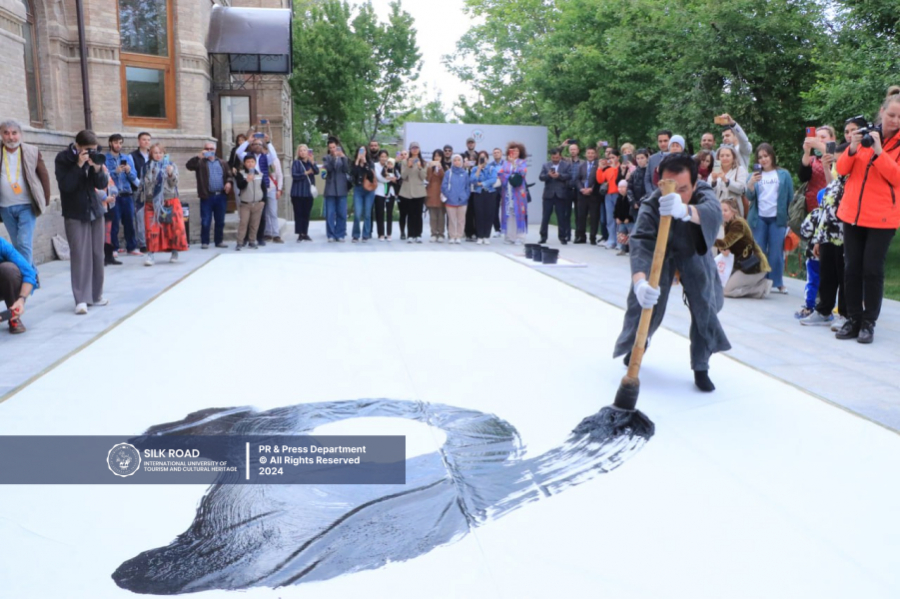The first negative results of climate change can be observed since the drying up of the Aral Sea in the 1960s.
On the initiative of the Ministry of Ecology and Climate Change, during the second ten-day period of April of this year, a group of qualified artists from Uzbekistan, Latvia, Georgia, Egypt, Kazakhstan, South Korea and the UK visited Karakalpakstan in particular Munak and saw this tragedy with their own eyes. All the impressions that the artists saw at the site of the Aral Sea were captured on paintings in the Art Residence art workshop under "Silk Road" International University of Tourism and Cultural Heritage.
This rate served as the basis for the creation of the first exhibition of the art residency "Footprints on the Sand" dedicated to the destruction of the Aral Sea. The opening day of the exhibition, dedicated to the creative examples of these talented artists, was organized yesterday, April 28. Along with a group of artists, representatives of the regional administration, organizers, university professors and students, and media representatives, bloggers took part in the exhibition. First, the speakers at the event spoke about the importance of the fact that the Aral Sea is a problem not only for one country, but for the whole world, and that the artists represent this tragedy in their own time. After that, South Korean artist Kweon Jongchan painted a huge volume of the image of a shark and the living world that once inhabited the Aral Sea in the courtyard of the "Art-Resendia" building.
After that, an exhibition of creative works by great artists from 7 countries in about thirty different genres dedicated to the island tragedy opened. The exhibition will last until July this year.
